By Students of the Spring 2024 Capstone Studio: Community Planning Course, San José State University, September 20, 2024
San José State University’s Spring 2024 Master of Urban Planning Capstone studio students undertook an intensive planning and community engagement study of an area at the juncture of the cities of Saratoga, Campbell, and San José. The study area, a three-quarter mile radius around the proposed El Paseo de Saratoga Urban Village, where Saratoga Ave., Lawrence Expressway, and Quito Road meet, is home to a busy commercial corridor with proposed new developments. San José Vice Mayor Rosemary Kamei, the study area’s District One Council representative, supported the project. The Vice Mayor’s office contributed by providing information and guidance to help define the study area and initial points of interest.
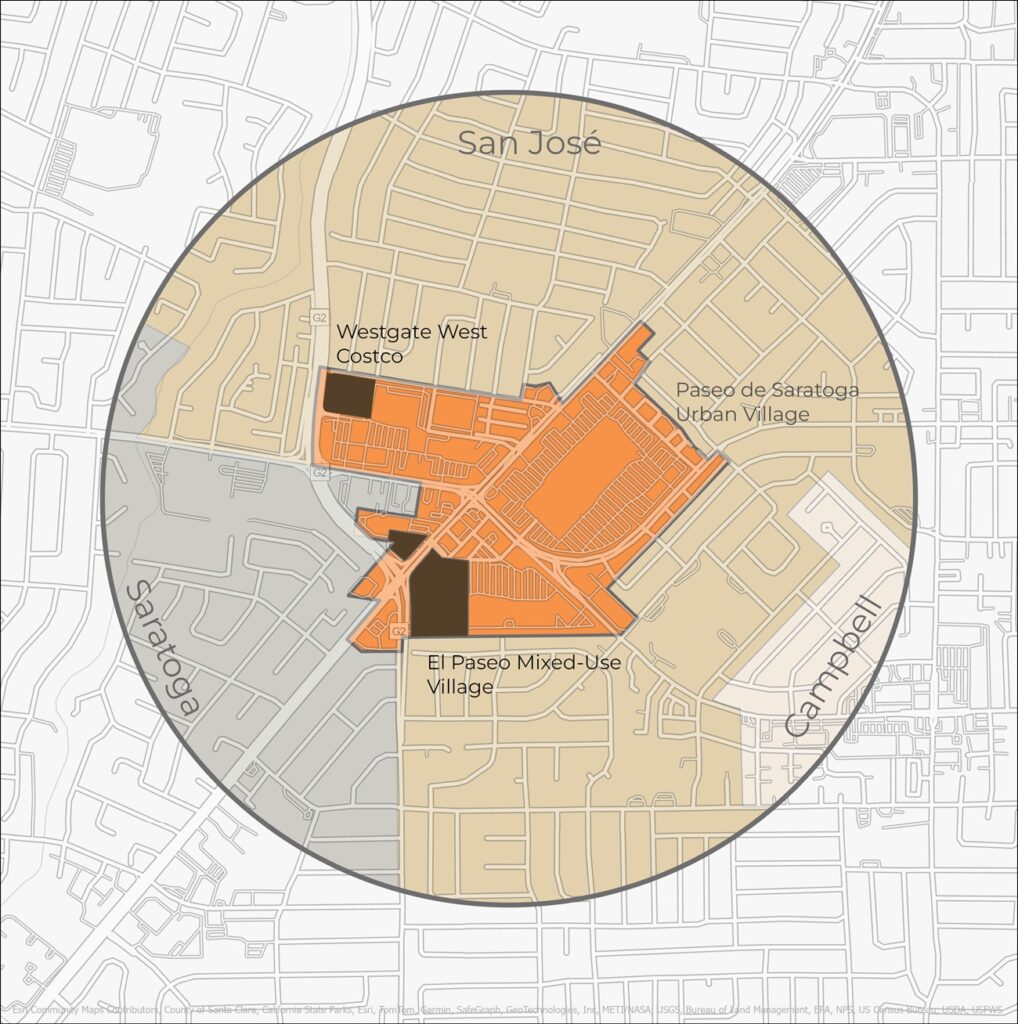
The study’s goal was to assess the area for potential improvements in several key areas: transportation, including sidewalks, bus stops, and bike lanes; housing, encompassing senior, affordable, and market rate options; placemaking, focusing on parks and community gathering spaces; and economic development, considering both small local businesses and large chain retail establishments. The students split the study into two phases. In Phase 1, students researched the existing conditions and prepared materials for community outreach. In Phase 2, students engaged the community by conducting surveys, then analyzed the findings and developed a set of final recommendations.
The study area boundary, El Paseo de Saratoga Urban Village, is highlighted in orange, and the proposed development sites are in brown.
Photo credit: ESRI, State of California, and City of San José, SJSU Capstone Students, April 2024
The student team began by reviewing planning documents and guidelines for San José, Saratoga, and Campbell. They also met with planners from the San José Department of Transportation (DOT) to discuss the study area and receive an overview of how past Multimodal Transportation Improvement Plans (MTIPs) might inform the project. Additionally, the students conducted several walking tours of the area to help orient them to the conditions on the ground. With this background, they developed an initial understanding of how existing plans and programs fit into a real-world context.
The team divided themselves into four small groups to draw different perspectives on the area through ‘Urban Montages’ that displayed their in-person experience of the existing conditions. Each montage was concentrated into themes – transportation, community spaces, local businesses, etc. – that helped provide useful insights for class discussion. These site visits and montages prepared the students to engage with the community in what became one of the more rewarding experiences of the semester. The students were able to hear first-hand how existing plans might impact the people living, working, and visiting the study area through in-person surveys held at pop-up events.
Students engage with community members at the Saratoga Dog Park. At pop-up events held during the semester, the team conducted surveys and gathered feedback from community members.
Photo credit: SJSU Capstone Students, April 2024
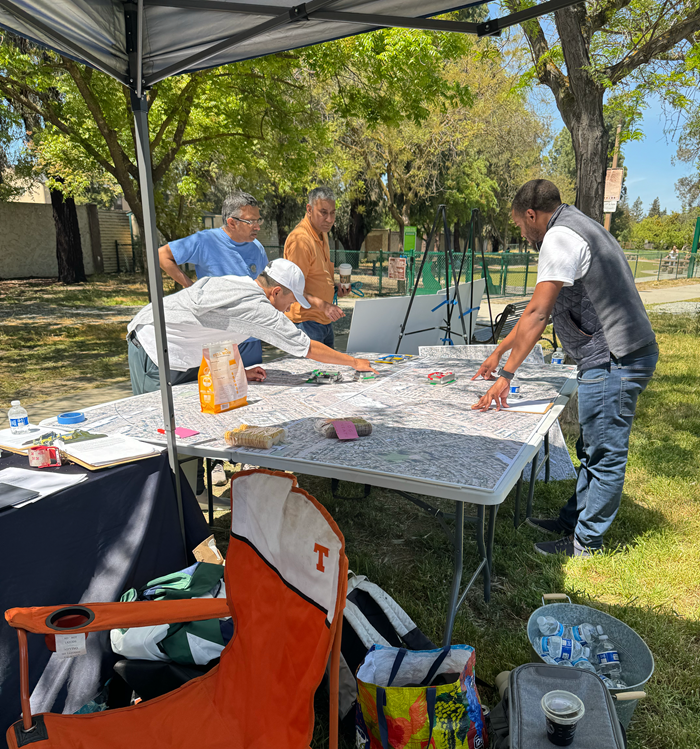
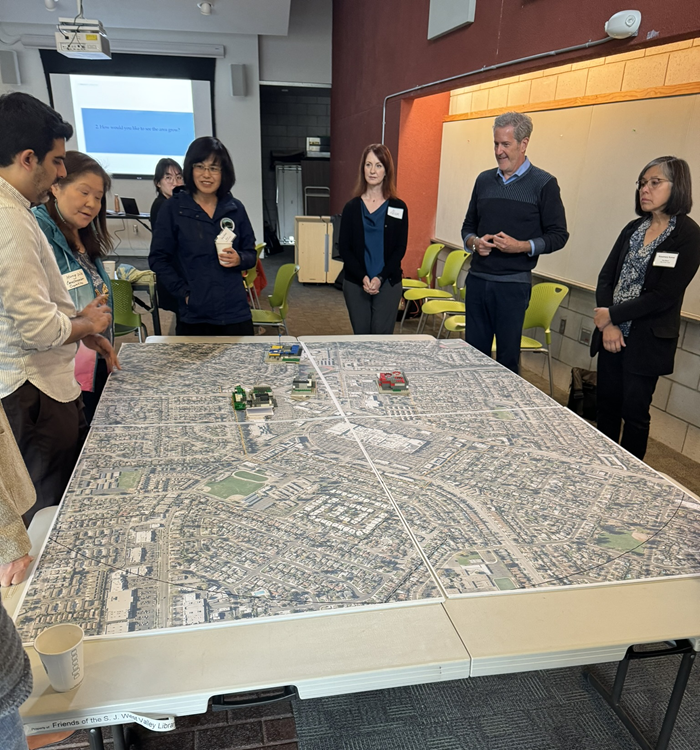
The students also presented the project to local elected officials from the study area’s three jurisdictions. This was an opportunity to engage with them and hear how they would like to be involved. The local elected officials expressed a willingness to support the study moving forward.
Students held focus group events during the semester, such as at the West Valley Public Library, to present preliminary findings and gather feedback from elected officials.
Photo credit: SJSU Capstone Student, April 2024
Based on communication with project consultant Doug Moody, San José DOT staff, community feedback, and data gathering, students made recommendations that they grouped into three themes: Improving Mobility and Safety Conditions, Creating a Place and Fostering Economic Vitality, Establishing Key Leaders and Amplifying Community Voices.
These recommendations, research, community engagement findings, and results were presented to project stakeholders from each city. The Three Places report and presentation are available online.
The themes and recommendations served as the guiding overview of the work throughout the semester. Students were advised that the primary outcome of the report would be recommendations that could be further studied and built upon by the next capstone class and project stakeholders. Using Artificial Intelligence (AI) image generators, students developed sample visualizations of what some of the recommendations could look like.
The first image reflects the theme of “Creating a Place and Fostering Economic Vitality” by enhancing pedestrian area design in the study area. Under the recommendation to improve connectivity between the area shopping centers, one of the strategies identified was parking lot upgrades. The AI image displays enhanced design concepts for shopping center lots.

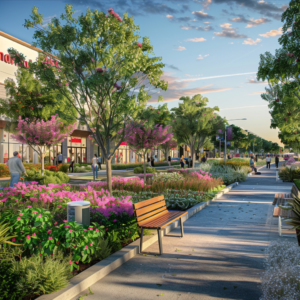
The second image relates to improving multimodal mobility and safety conditions. Within that theme, the recommendation was to enhance infrastructure for the area’s cyclists, pedestrians, and transit riders. The AI image conceptualizes what that could look like. Emphasizing ways to enhance the mobility and safety of the existing infrastructure was important throughout the study.
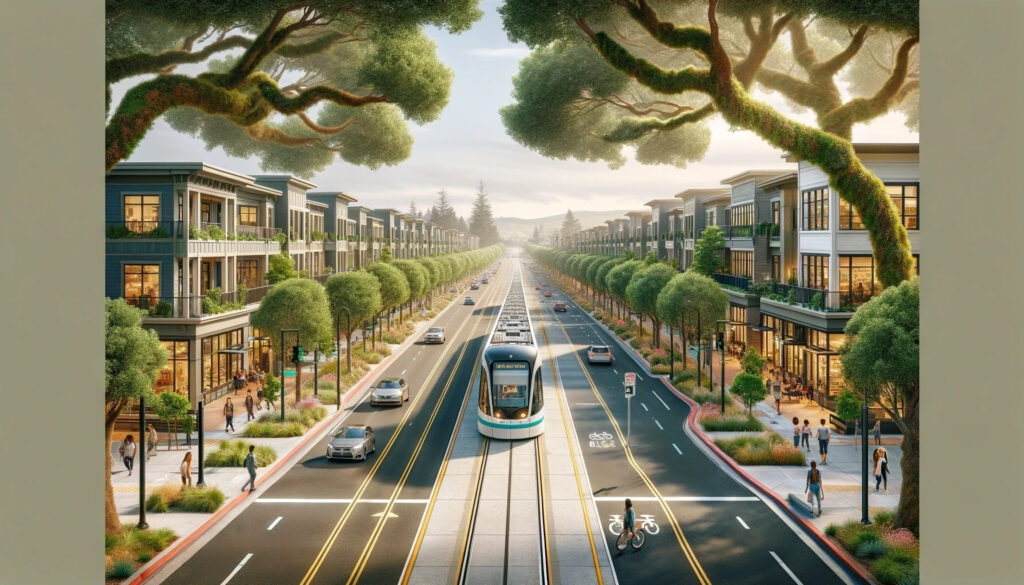
Photo credit: ChatGPT and DALL-E, SJSU Capstone Students, April 2024
Student teams and smaller group units were a great way to undertake this type of project over a four-month-long semester, a short time for a planning study. By specifying each group’s focus and then bringing them together toward the end of the study, students could produce a set of preliminary recommendations. This laid the groundwork for the next semester’s students to pick up and further study and develop the proposed recommendations.
The student’s final report summarized the initial findings from the existing conditions review and community engagement. It provided details to interested stakeholders on how the area can be utilized for improvement, and it engaged and connected stakeholders in a way that would have been more challenging had it not been for the study the students undertook. The final report also allowed city leaders and community members to share ideas and see feedback incorporated into a report that could guide the area’s future. Ultimately, synthesizing input from various stakeholders helps ensure the final plan reflects diverse perspectives – an ideal outcome for the planning process.
About the Authors
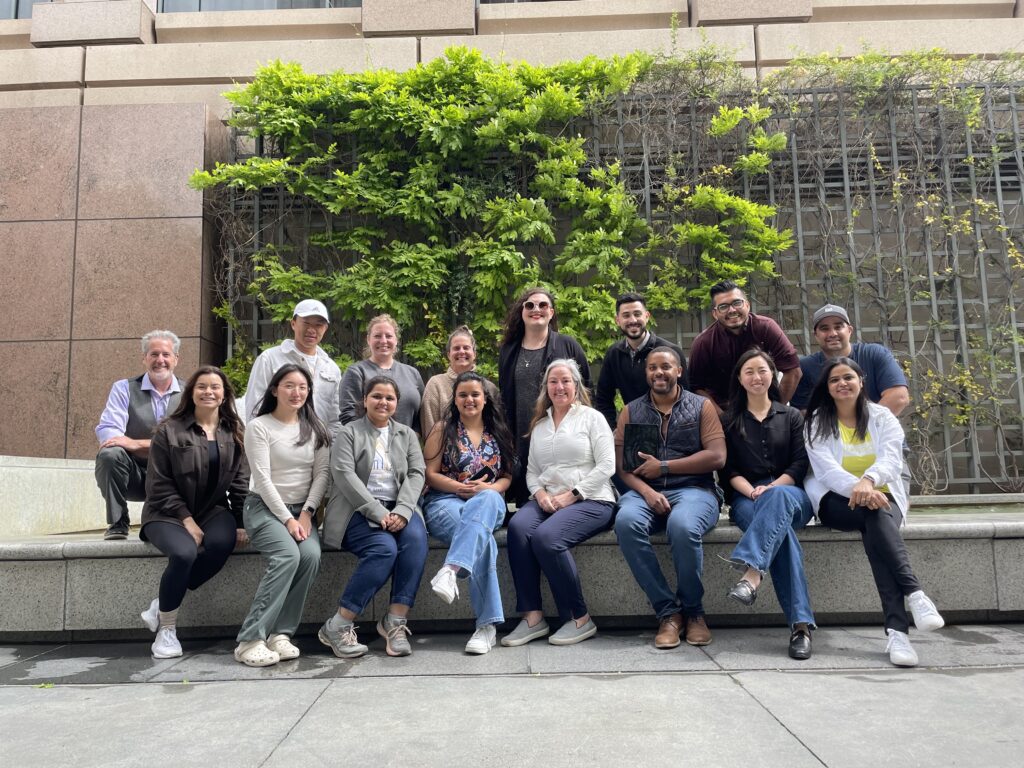
San José State University’s Spring 2024 Master of Urban Planning Capstone studio students
(top row, left to right) Rick Kos, Zhongkai Zhao, Edward Huynh, Carlina Rose, Lisa Hood, Jacky Gil, Miguel Sanchez, Gil Navarrete, Nick Rodriguez
(bottom row, left to right) Maria Kisyova, Luana Chen, Shreya Chokshi, Ishita Simhal, Judi Heher, Trevor Brown, Yin Sham, Ruchi Rani
